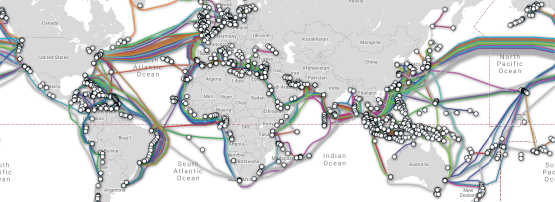
Google has published a blog post about the deployment of new subsea fibre optic cable systems, which they now have a significant interest in. This isn’t exactly new, or news — fibre optics have been written about frequently, including at the APNIC Blog in 2020. There has also been fantastic content delivered at APNIC conferences over the years by organizations like TeleGeography.
The Google piece is a great visual explainer about some of the key concepts in modern fibre optic communications, the intersection of cloud deployment, and long-haul transit. Previously, we’d be looking at cable systems as the primary path for most non-local content, and for most of the time before Content Delivery Networks (CDNs), that was true; for Australia, 75% of the content used to come from offshore paths over fibre.
CDN and Internet Exchange (IX) located data, or data embedded in the ISP is now much more ubiquitous, and the dynamics of ‘nonlocal’ fetch have changed significantly. It’s now much more likely that the data you think was fetched over long-haul fibre was actually from a local cache or a local cloud instance, replicating the master, which is where you would have gone before.
The fibre is still there, but the fetch happened underneath, before you even thought about clicking on it. The data is being ‘shadow copied’ into a local space, and you don’t see long-haul fibre delay any more because it’s served much more locally now.
Does this make the fibre less vital? Not at all! It’s even more important to have high-speed and highly reliable paths between the cloud instances. Now, however, they’re important for different people — your cloud services provider and generalized platform providers like Google, Akamai, Azure, Fastly, and CloudFlare are the ones sending most of this data.
Google’s blog post is aimed at helping people negotiate this space, and is obviously up-selling Google Cloud. But the general message is strong and applicable to anyone interested in the stability of the Internet at scale.
The views expressed by the authors of this blog are their own and do not necessarily reflect the views of APNIC. Please note a Code of Conduct applies to this blog.
